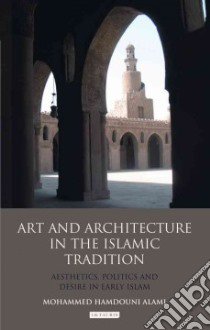Art and Architecture in the Islamic Tradition - 9781848855441
Un libro in lingua di Alami Mohammed Hamdouni edito da Tauris Academic Studies, 2010
- € 88.00
- Il prezzo è variabile in funzione del cambio della valuta d’origine
Mohammed Hamdouni Alami argues that Islamic art has historically been excluded from Western notions of art; that the Western aesthetic tradition's preoccupation with the human body, and the ban on the representation of the human body in Islam, has meant that Islamic and Western art have been perceived as inherently at odds. However, the move away from this 'anthropomorphic aesthetic' in Western art movements, such as modern abstract and constructivist painting, has presented the opportunity for new ways of viewing and evaluating Islamic art and architecture.
This book questions the very idea of art predicated on the anthropocentric bias of classical art, and the corollary 'exclusion' of Islamic art from the status of art. It addresses a central question in post-classical aesthetic theory, in as much as the advent of modern abstract and constructivist painting have shown that art can be other than the representation of the human body; that art is not neutral aesthetic contemplation but it is fraught with power and violence; and that the presupposition of classical art was not a universal truth but the assumption of a specific cultural and historical set of practices and vocabularies.
Based on close readings of classical Islamic literature, philosophy, poetry, medicine and theology, along with contemporary Western art theory, the author uncovers a specific Islamic theoretical vision of art and architecture based on poetic practice, politics, cosmology and desire. In particular it traces the effects of decoration and architectural planning on the human soul as well as the centrality of the gaze in this poetic view - in Arabic 'nazar'- while examining its surprising similarity to modern theories of the gaze.
Informazioni bibliografiche
- Titolo del Libro in lingua: Art and Architecture in the Islamic Tradition
- Sottotitolo: Aesthetics, Politics and Desire in Early Islam
- Lingua: English
- Autore: Alami Mohammed Hamdouni
- Editore: Tauris Academic Studies
- Collana: Tauris Academic Studies (Hardcover)
- Data di Pubblicazione: 15 Dicembre '10
- Genere: ART
- Pagine: 289
- ISBN-10: 1848855443
- EAN-13: 9781848855441


